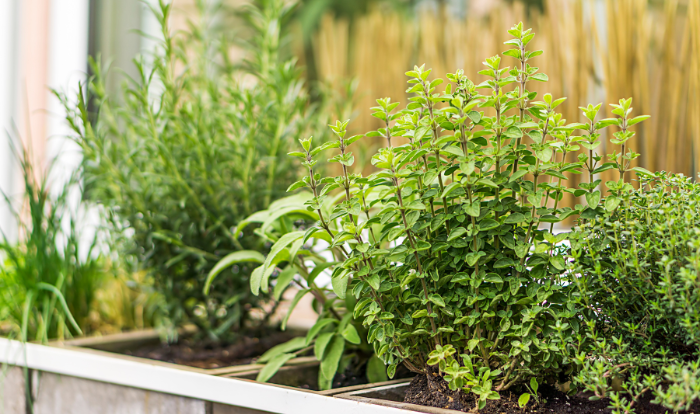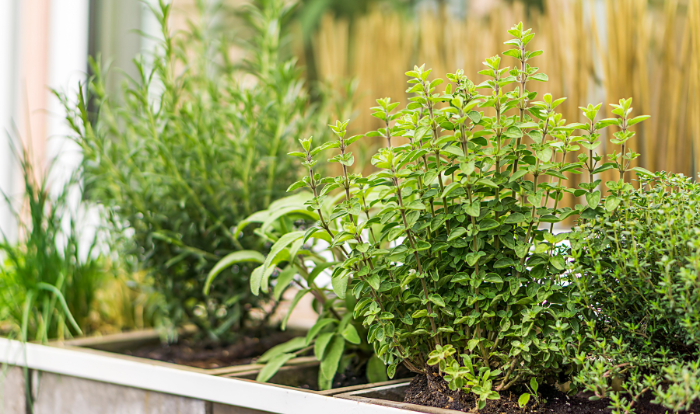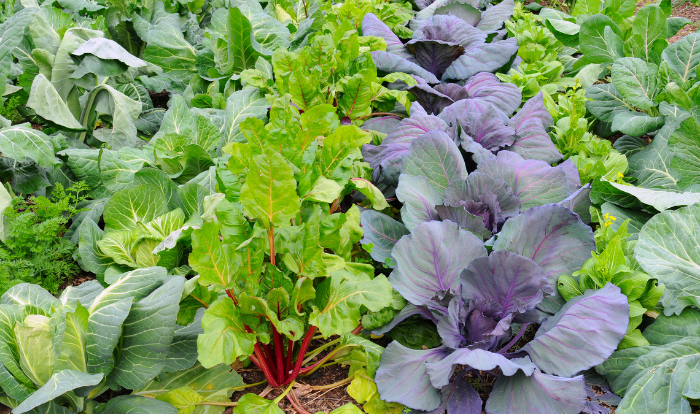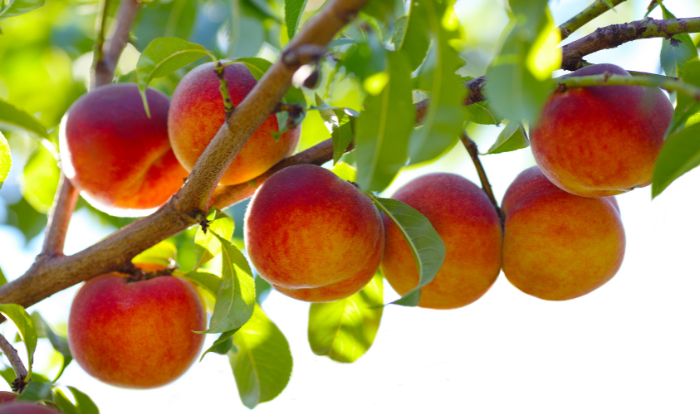
07 Mar Transform Your Landscape with Edible Landscape Design in Omaha, Nebraska
As 2024 unfolds, exciting new landscape trends are taking root. Alongside the surge of modern features like robotic mowing and low-maintenance plants, a captivating trend is captivating homeowners: edible landscapes.
While the image of picking fresh strawberries from your backyard may seem idyllic, edible landscapes aren’t just about instant gratification. Instead, they require thoughtful planning and dedicated care. The reward, however, is a lasting one, a vibrant landscape that nourishes both you and your landscape!

What is Edible Landscaping and What Are the Benefits?
Edible landscapes are landscape designs that creatively integrate edible plants alongside ornamental plants for a visually stunning and functional outdoor space. While aesthetics are important, edible plants offer a unique advantage: they go beyond beauty, providing a bounty of benefits for your property, well-being, and family.
Edible landscapes are landscape designs that creatively integrate edible plants alongside ornamental plants for a visually stunning and functional outdoor space. While aesthetics are important, edible plants offer a unique advantage: they go beyond beauty, providing a bounty of benefits for your property, well-being, and family.
- Interactive Landscaping: Think about your interaction with the plants in your landscape. Often, it’s limited to watering, mulching, or adding soil. However, with edible plants, your care yields tangible and delicious results. Imagine stepping out into your yard to pick fresh mint for a celebratory mojito or harvesting cucumbers for a salad. It’s an interactive experience that can also serve as a bonding and educational opportunity with family and friends, teaching lessons in patience and togetherness.
- Sustainability & Health: Edible plants attract beneficial insects and pollinators like bees, butterflies, and ladybugs, enhancing your entire landscape’s ecosystem. Incorporating these plants can positively impact the planet by reducing your carbon footprint and improving air and soil quality around your home.
- Improves Your Health: Homegrown fruits and vegetables are often picked at peak ripeness when their nutrient content is highest. This means you’re getting a more fresh and concentrated dose of those minerals and vitamins compared to produce at the grocery store! This makes it easier to have more control over your ingredients and reduce the use of processed foods. Plus, gardening itself is a form of physical activity that can provide stress relief, offering an opportunity to connect with nature and de-stress from daily life.
- Providing Privacy: Edible plants aren’t just for consumption; they can also offer privacy. Tall vegetables, berry bushes, and fruit trees can create natural, living barriers, adding a layer of privacy to your outdoor spaces while maintaining aesthetic appeal.

Planning and Designing an Edible Landscape
Planning for an edible landscape isn’t just about planting a few vegetables and hoping for the best. Just like any landscape project, taking the time to ask the right questions and understand your specific needs is key to long-term success.
Here at Sun Valley, our designers follow the same approach with all our clients, whether they dream of a sprawling orchard or simply want to add a few herbs to their existing space.
Here’s where asking the right questions comes in:
- What are your main goals for the edible landscape? (culinary interests, aesthetics, self-sufficiency)
- What fresh food do you love to eat?
- What is the size and layout of the desired space for your edible landscape?
- What type of sunlight, soil, and irrigation systems do you currently have?
- How much space do you have for your edible landscape?
- Do you know how to properly care for edible plants?
- How much time are you willing to invest in caring for your edible landscape?
By taking the time to understand your needs and preferences, you can create an edible landscape that not only looks stunning but also provides you with fresh, delicious food throughout the season. Remember, even a small space can be transformed into a bountiful haven with careful planning and the right plant choices.

Best Edible Landscape Plants for Omaha
We all know Nebraska today to be associated with its grain and livestock production, but did you know that during the late 1800s and early 1900s, Nebraska was nationally recognized as a fruit-producing state?
Omaha’s unique climate, classified as Hardiness Zone 5, offers a diverse selection of thriving and delicious edible plants to incorporate into your landscape design. If you’re looking to incorporate multiple Serviceberries along your property or you just want to enjoy the scent of fragrant herbs, there are options to suit every taste and skill level.
Here are some popular and reliable choices to consider for your Omaha edible landscape:
| Fruiting Trees and Shrubs | Herbs, Fruits, and Vegetables |
| Pears | Strawberries |
| Apples | Lemon balm |
| Plums | Chamomile |
| Peaches | Rosemary |
| Cherries | Thyme |
| Native Pawpaw | Lavender |
| Raspberries | Mint |
| Serviceberries | Chives |
| Chokeberries | Parsley |
| Blackberries | Tomatoes |
| Elderberries | Cucumbers |
| Hazelnuts | Asparagus |
Fun Fact: There’s a chance that you may even have edible plants growing on your property! While you might see Dandelions as a bothersome weed on your property, they are also edible, amongst Lamb’s Quarters and Yellow Wood Sorrel!
Design Your Edible Landscape with Sun Valley Landscaping
Are you craving a healthy lifestyle upgrade that’s uniquely yours? Our team of landscape designers can create an edible landscape tailored to your preferences and your taste buds.
Get in touch with our designers today!


